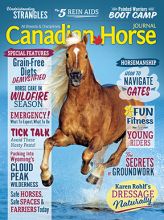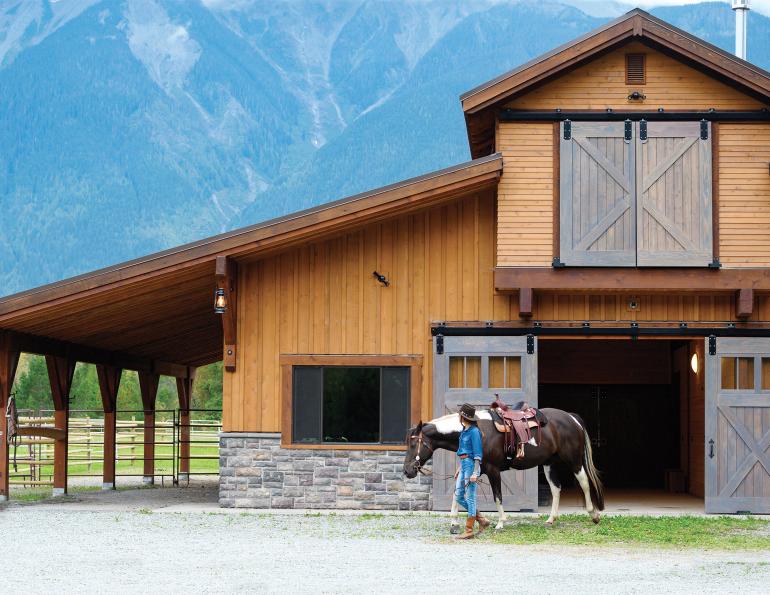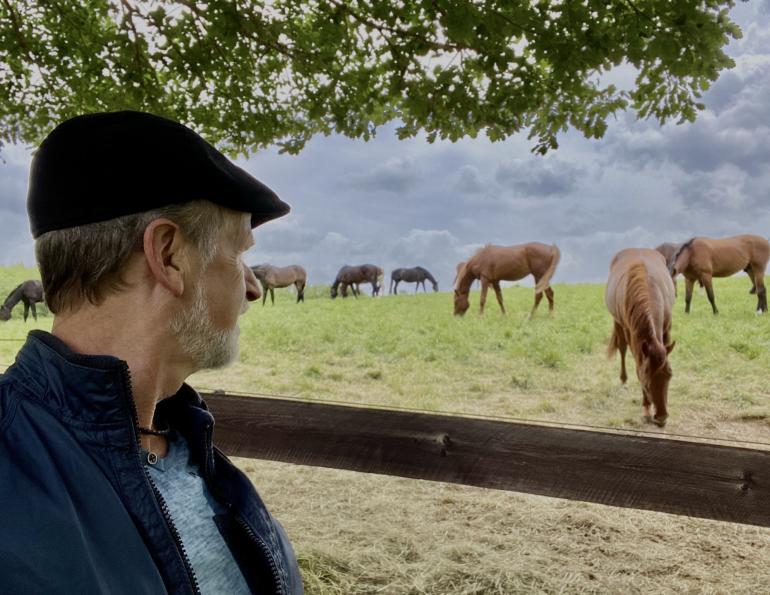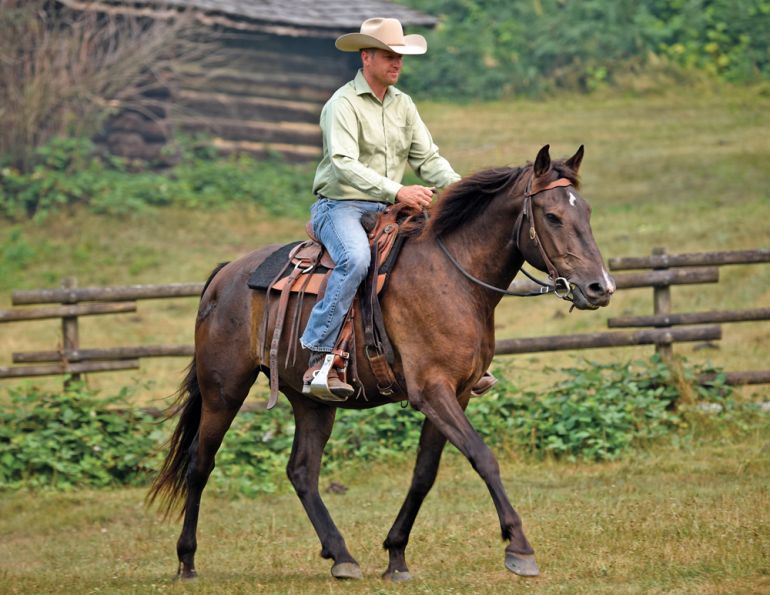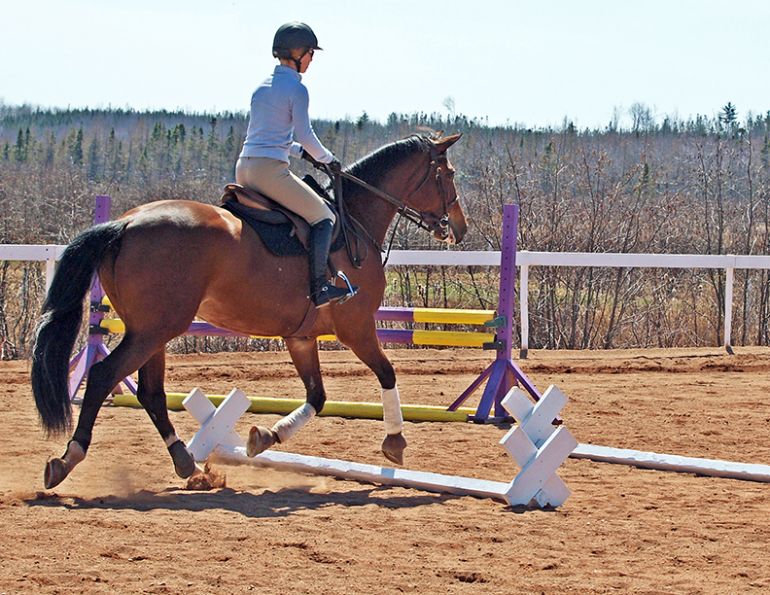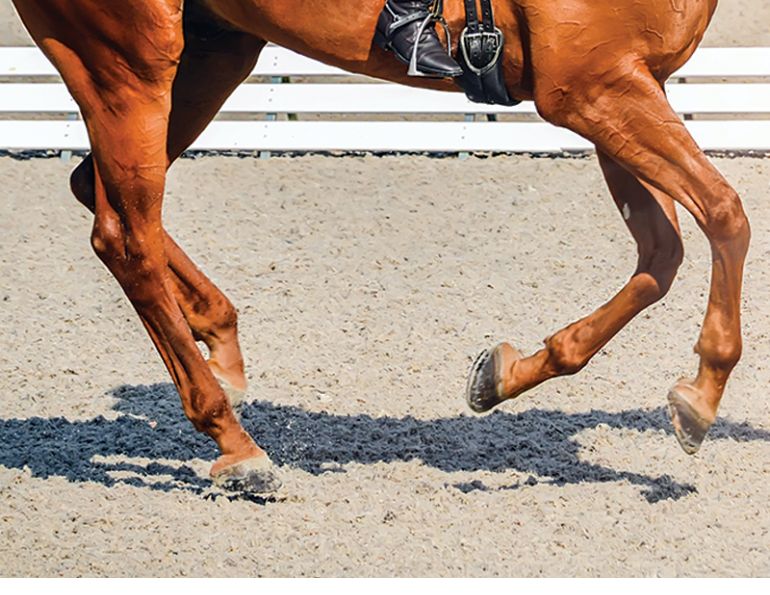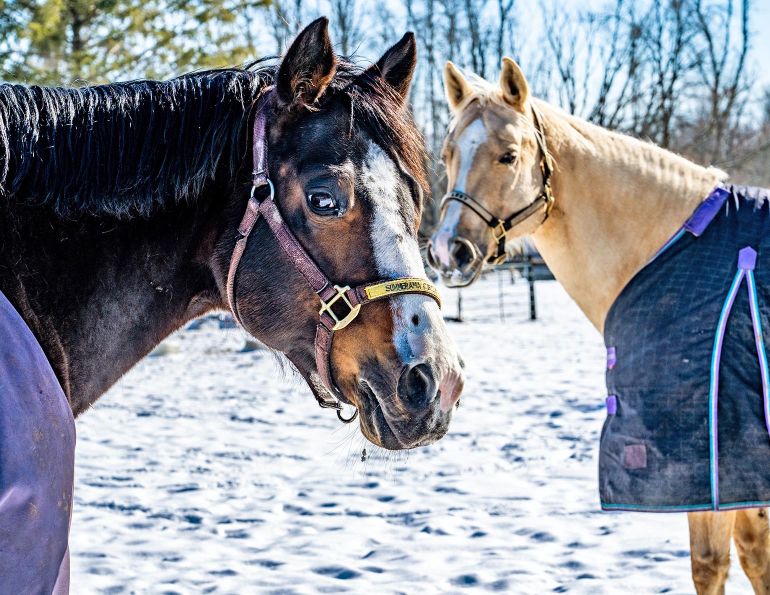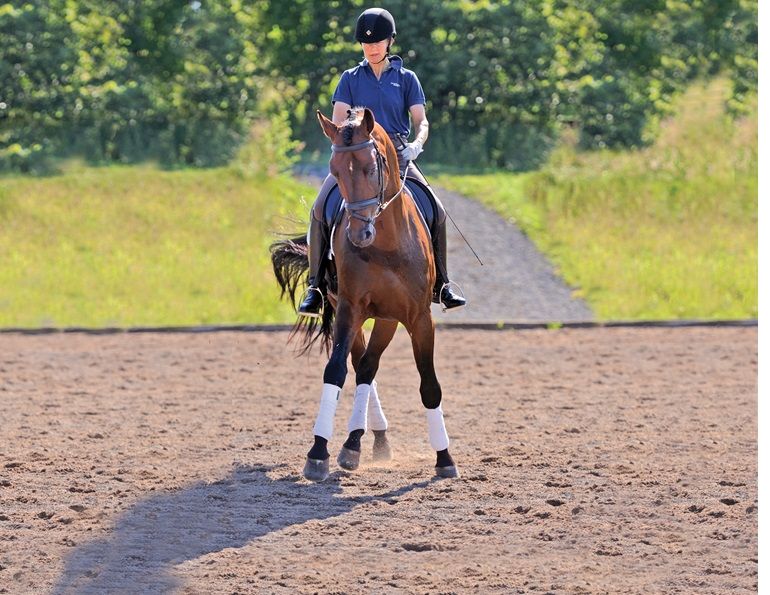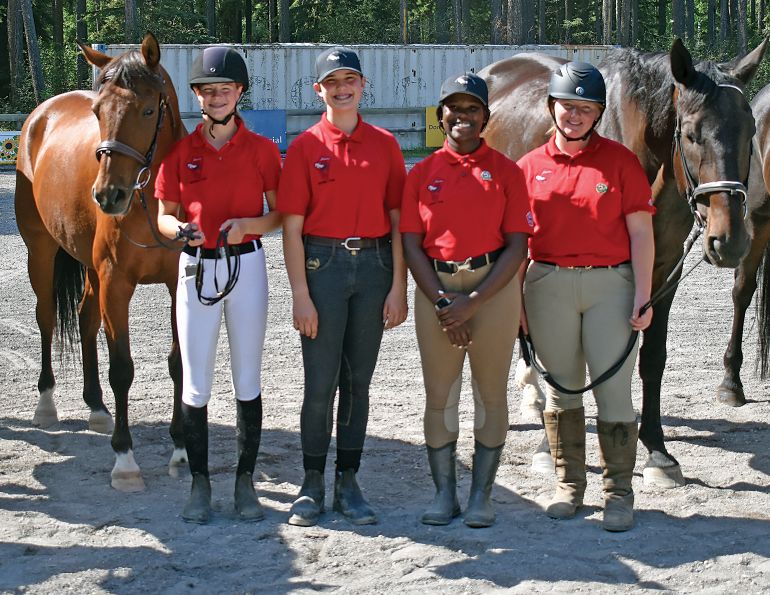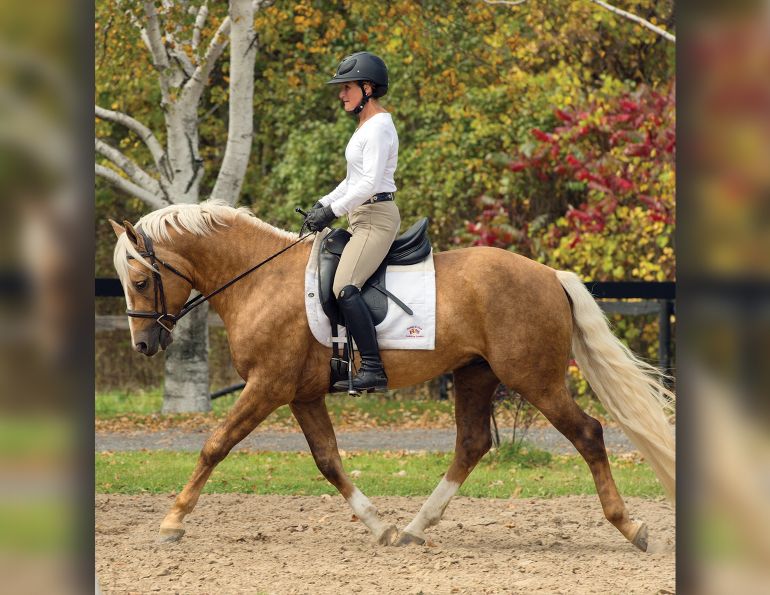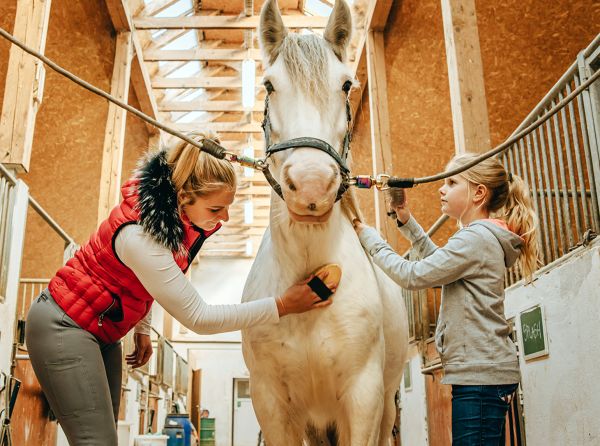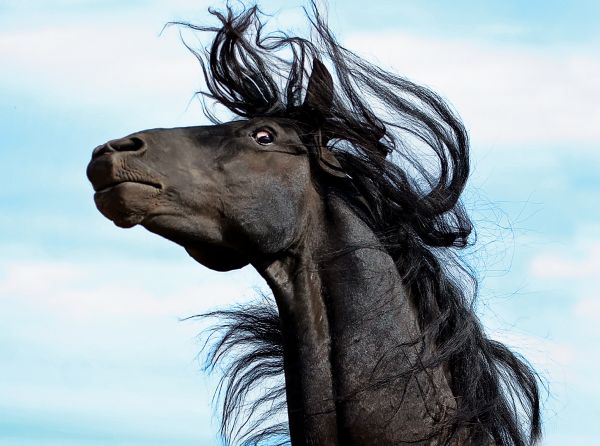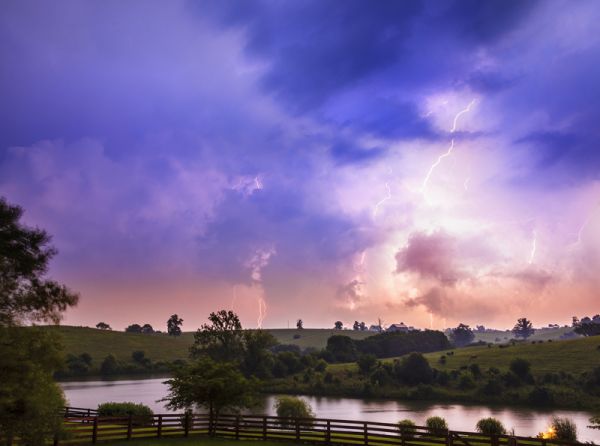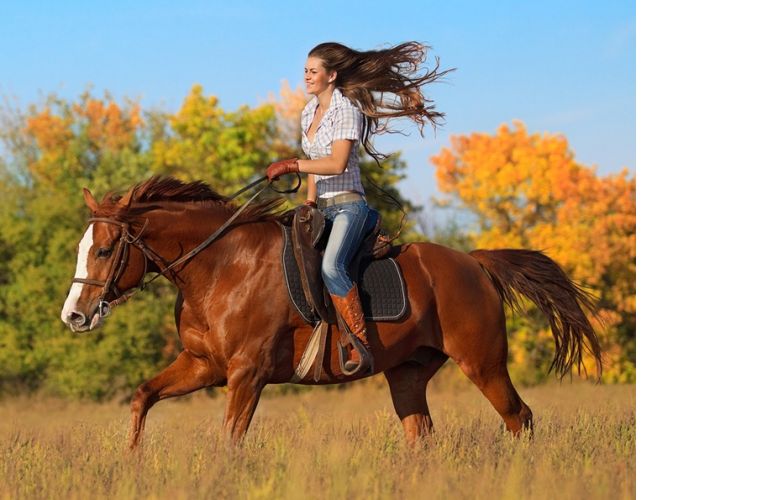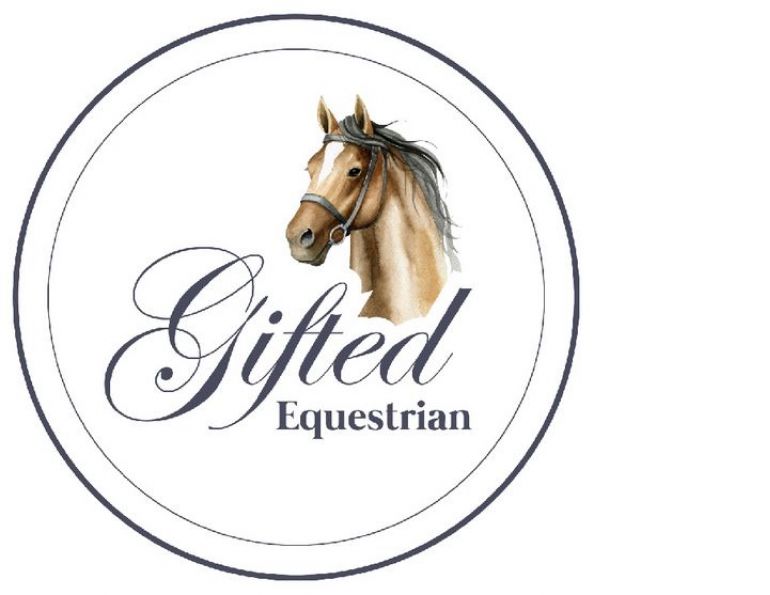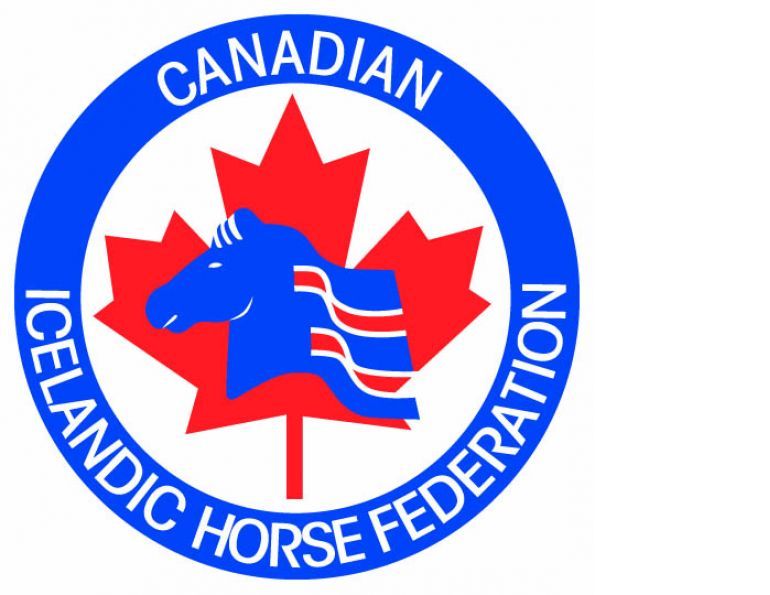By Lindsay Grice, Equestrian Canada coach and judge
Do you ever wander away from the mounting block, still adjusting your stirrups, pondering what to work on in today’s schooling session?
Does your coach ever ask (I always do) what you’ve been working on since your last lesson, and you admit mostly logging miles on your horse’s odometer?
Is time with your horse squeezed between life’s many daily responsibilities, and sometimes squeezed out altogether?
If so, you need an effective, efficient and creative game plan for your training sessions.
EFFECTIVE — How Horses Learn Best
The best teachers adapt to the learning style of their students. Of course, we’ll never know what it’s like to be a horse, but with insights from research into how horses think and learn, training them can be simpler and safer. These findings often harmonize with the observations of those who’ve spent years watching and working with horses. Yet, other evidence clashes with some of our long-held horse traditions.
The key to being effective is knowing how horses learn best or understanding “equine learning theory” (see The Science of Schooling Horses). I see systematic schooling as steps in a staircase: sets of repetitions — stepping up a basic skill to the next level — regular landings on which to take breaks and process things.
Make the right choice obvious. Equine (and human) students thrive on rewards. Horses are motivated to make choices not only by “no” (blocking wrong answers with pressure) but perhaps even more by “yes” (a wide-open door to the right answer).
What speaks “yes” to your horse? Release the pressure – I mean really release it (I call it “melting”). Support that release with a neck scratch or even a food reward (if timed right) and your horse will be more likely to connect the dots.
When confused, the horse’s right try might happen by accident, as if he’s guessing. Matching that accident or guess with a well-timed “yes” can be a window to a training breakthrough. Approaching your training session positively means looking for opportunities to communicate what you do want more than what you don’t want.
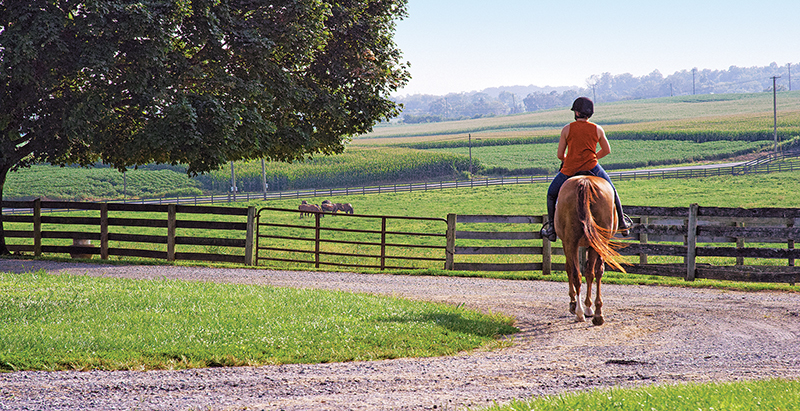
Practice the lessons your horse has learned in a new environment to make sure he really knows them. Photo: iStock/Hoptocopter
Reward the try. By rewarding his most basic effort, you’re telling your horse he’s on the right track. It’s called shaping- stepping toward the target behaviour by rewarding the approximation of it and then asking for progressively more. For example, your horse is cantering reliably and now you want to shorten his stride. He may respond with a menu of wrong answers such as leaning on the bit, getting quicker, or breaking to a trot. But if you catch and release on the magic moment when he opts to shift his weight back to collect himself, he’s likely to try that option again… and then again.
As another example, turn on the haunches may begin with one wider step with your horse’s inside front leg. Reward that try and he may try another. When your horse is no longer “trialling” wrong answers and regularly getting the right one, it’s time to push to the next level.
Know when to push and when to wait. On the training staircase, pushing to the next level involves risk. I think of measured risks as those 80 percent likely to succeed — risks employing enough pressure to motivate a change, yet not enough to stir up fear and failure. Horses in anxious states don’t learn. Rather, they’ll try to escape instead of trying something new. Success can make us greedy to ask for more, such as pushing through to the scary water box instead of step… wait and chill… step again. Another example of a measured risk is being content with fewer trotting strides into a canter departure before expecting lift-off from a walk.
Know when to quit. As a coach, I walk the balance between what benefits the rider and what benefits the horse. Rehearsing over and over is the recipe to becoming automatic. You build muscle memory and proficiency until you can execute techniques without consciously thinking about them. Yet, logging miles on the odometer is a sure road to a sour horse. What the human athlete gains by polishing her position and building stamina is apt to take a toll on her horse. Unlike bikes and snow boards, the tools for equestrian sport live, breathe, and think!
Related: Trigger Points in Horses
Related: The Many Hats of a Horse Show Judge

Does your coach ask what you’ve been working on since your last lesson? Do you sometimes admit you’ve just been putting miles on your horse without a plan for each training session? Photo courtesy of Lindsay Grice
Expect training setbacks. From time to time, in stepping up to the next level, things get worse before they get better. If you encounter a roadblock or behaviour issue, try another approach or break down the skill into simpler steps.
Take a deep breath. “C’mon – you know this perfectly well!”
When I assume my horse is being stubborn or stupid, the truth is, in my frustration, I’ve frankly run out of creativity and patience. Emotions make our aids unclear. When hitting a snag in a training session, opting for logic over emotion is a more effective way to bridge the communication gap with the horse. A deep breath clears headspace for sober assessment.
- Does my horse understand the aids?
- Have I delivered them accurately?
- Is tension, distraction, or pain interfering with his response?
EFFICIENT — Make the Most of Your Practice Time
Have a plan. Every teacher begins with a lesson plan. I’ll map out plans in my head while driving. At the top of the training staircase, I visualize the ultimate skills horse and rider need to reach their goals. Each step is a logical piece toward building those skills. Landings are breaks that offer a few minutes to work on quieter movements or review familiar ones before resuming the climb.
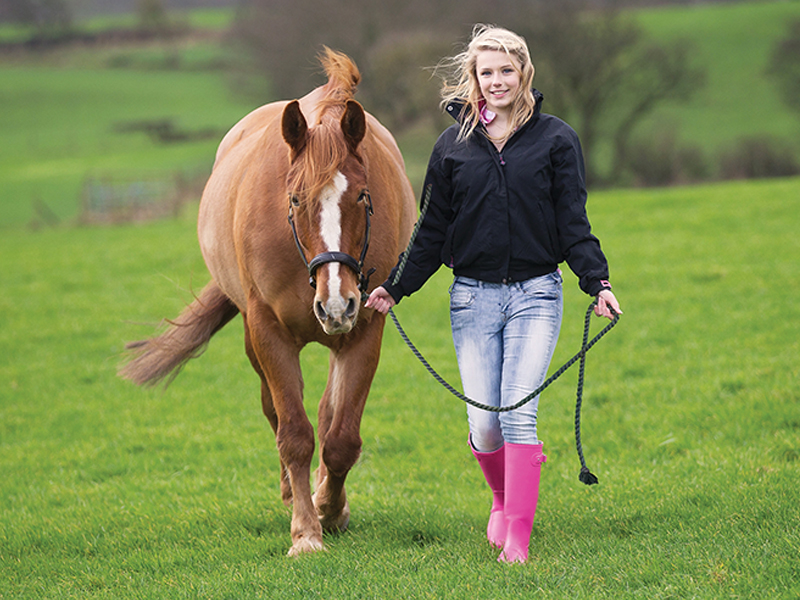
While driving to the barn or getting your horse ready, think about what you’ll work on to build toward the skills you need to reach your goals. Photo: iStock/Leon Harris
Be flexible. No lesson plan is etched in stone. Horses and riders get stuck, so don’t be discouraged if you remain on the same step for a few days before you continue climbing. For example, a flying change is assembled from building blocks of repetitions: leg yields, lateral movement of shoulders and haunches, counter-canter. It could take a couple of months to build the lead change.
Winging it is a waste of time. Why? Because slow and steady inevitably wins the race. Skipping steps will trip you up, which means having to descend the staircase and rebuild your horse’s understanding and confidence.
Fit the maximum skills into a minimum time budget. I have learned to be efficient as a horse trainer. Wasting 15 minutes with the first rides tip the dominoes, inevitably bumping the last one to the following day, knocking back the evening lesson schedule, and letting clients down. The upside was discovering that efficient schooling actually works better (and science confirms it).
The quality of your practice session is determined by the quality, frequency, and rhythm of the questions you ask your horse, not by the time on the arena clock. If you’re short on time, resist opening up a can of worms by teaching something new today. Setbacks take time to sort out. Limit today’s lesson plan to several elements you’ll need for your next horse show or trail ride. Trotting around the well-worn track beside the arena rail won’t yield the same dividends as asking your horse those questions that’ll arise in competition. Use the staircase landings to practice things like standing still beside the mounting block, opening a gate, reining back, turn-on-the-forehand, or introducing neck-reining at the walk.
CREATIVE — Ideas to Ban Boredom
Balanced variety. Horses thrive on routine, predictability, and consistency. For a prey animal, predictability is preferable to the spice of life. Though repetition benefits your horse, drilling does not. Divide your practice session into subjects or categories to break up monotony. Categories might complement your horse show classes, rotating through essential manoeuvres you’ll need for horsemanship patterns, trail obstacles, and ranch riding classes. Or your practice plan might feature a cycling through some work over fences, then tuning up transitions for equitation on the flat, returning to more fence work, and finishing by imagining being judged in a hunter-under-saddle class.
Related: How Long Should I Train My Horse Daily?
Related: When Things Go Wrong in the Show Ring
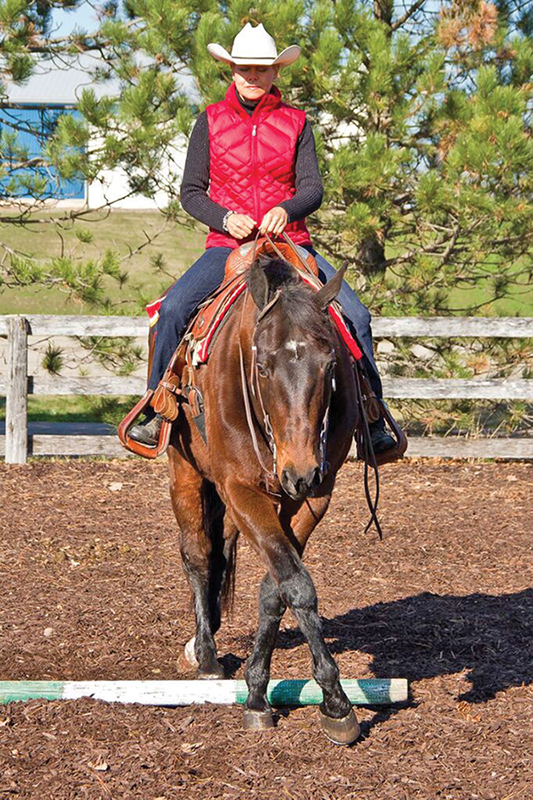
Your practice plan might complement your horse show classes, rotating through the essential manoeuvres needed for horsemanship patterns, trail obstacles, and ranch riding classes. Photo: Peter Bruce
My lessons and training sessions often cycle through the “4 Ps” — my favourite drills for:
- Pace (transitions within and between gaits)
- Path (lateral movements)
- Package (connection, collection)
- Position (rider equitation fixes)
Practice the tough stuff. We all gravitate toward rehearsing things that come easily and avoiding things we struggle with. Many of us cringe at critiquing ourselves on video, yet playing and rewinding is an excellent teaching tool. Zoom in on the areas that don’t match the standard you were hoping for — your horse’s tense expression, your tense wrists. Design a lesson plan to reshape these areas into the picture you have in your mind. Practice trickier turns or tighter lines than required in classes at your level. When you ride up a level at home, the course, pattern, or test at the show will seem elementary by comparison. Overpreparing allows you to go with the flow at the show!
Practice with different equipment. I use poles and pylons in most of my lessons. Markers make us decisive — do it here; do it now. Markers reveal weak spots in training. I may not be as straight as I thought. Trail obstacles, tarps, flags, jumps, even cattle build your horse’s tolerance and patience and dial up the fun-factor.
Practice in different environments. Yes! Your horse has grasped the lesson. Now, do it here… and here. Take it to the outdoor ring, down the driveway, or off property. Perform the skill in the midst of distraction — in a crowded arena or all alone (even with his buddies whinnying outside). A skill isn’t learned until it works every time, everywhere.
Time off. Pushing ourselves creates stress, and stress is a good thing because it stretches us out of our comfortable ruts. Stretching and pushing builds physical and mental muscle — as long as it’s balanced by rest. We all benefit from a vacation now and then — standing breaks within each training session; weekly breaks from schooling. I’ve found that short seasonal breaks from horses are good for me, too. I look forward to getting back in the saddle and returning with more positive energy and creative solutions to training problems.
Related: The Case for LIghtness with Horses
Related: The Science of Tack & Training Aids
Photo: iStock/StockStudioX


